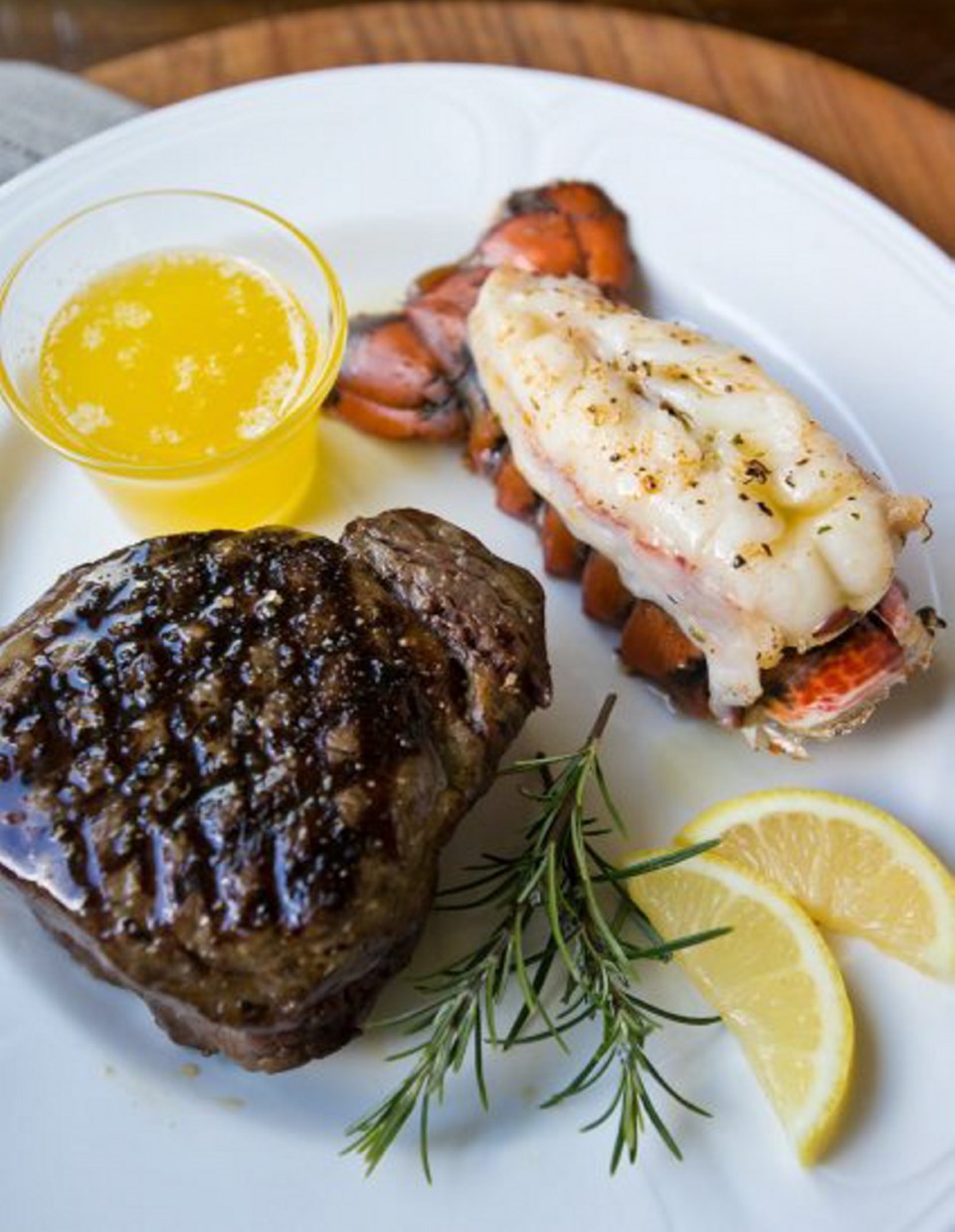 I know of at least two things that only occur every four years. One is leap year, which we’ll have this year on Feb. 29. The other is National Surf and Turf Day, which also occurs once every four years on Feb. 29.
I know of at least two things that only occur every four years. One is leap year, which we’ll have this year on Feb. 29. The other is National Surf and Turf Day, which also occurs once every four years on Feb. 29.
Today I’ll talk about the latter. It might be a bit early since it’s just Feb. 10, but Valentine’s Day is Sunday, so I thought this would be a good time to discuss this succulent combination of seafood and beef often plated for celebratory occasions.
According the food history website foodtimeline.org, while meat and seafood have been served at the same meal since antiquity, food historians generally agree the pairing of “surf and turf” is a modern American
convention.
Foodtimeline.org says fine establishments catering to elite diners craving both lobster and steak on the plate introduced the dish in the 1960s and that fact was noted in newspaper articles and ads from New York to Chicago to Portland.
Just who served the first surf and turf is not known, but a few sources suggest it was Seattle Space Needle’s restaurant, Sky City, during the 1962 World’s Fair.
Although there are now variations of what constitutes surf and turf, the classic combination is still a tender steak, such as filet mignon (beef tenderloin steak) and lobster, often just the tail.
Both can be pricy, so if you’re preparing them at home for your beloved, you’ll want to cook them just right, or the expense won’t feel worth it. To assist you, I have provided tips on cooking steak and lobster tail and a recipe.
Cooking Steak 101
Before cooking, let the steak warm at room temperature at least 20 minutes. If cooked refrigerator cold, it won’t cook evenly. Also, preheat your grill or skillet. If you don’t, the meat may stick and/or you won’t achieve a nice sear or grill marks.
A steak becomes firmer as it cooks. To see how it’s progressing, lightly press the steak in the centre. When very rare, the meat will feel quite soft; medium-rare steaks will be somewhat soft, but offer a little resistance. A medium steak will start to feel firm, but still have some give. Well-done meat will feel very firm.
Gauging a steak’s doneness by touch takes practice. If you’re a novice, it’s OK to cheat and make a small incision into the thickest part of a steak and peek inside to see how it’s cooked. If you keep practising the touch technique, after a while you’ll be a pro at judging doneness and not have to peek.
Preparing restaurant-style lobster tails
The words and photos at right show a restaurant-style way of preparing lobster tails for roasting, where before cooking the meat is removed from the shell and set on top.
Lobster tails are sold frozen, or thawed from frozen. If you’ve bought the former, you can thaw them by setting them in a sided dish in the refrigerator the day before you’ll serve them.
If your forgot to do that, you could also submerge the tail in cold water 30 minutes, or until thawed.
Grilled Steak with Roasted Lobster
I like to serve this classic “surf and turf” combo steak-house-style, with a baked potato and a buttered green vegetable, such as asparagus, broccolini or green beans, alongside.
Preparation time: 20 minutes
Cooking time: About 10 minutes
Makes: two servings
2 (6-oz /170g) beef tenderloin steaks or strip loin medallions, each about 2-inches thick (see Note)
• olive oil, for brushing
• salt and freshly ground black pepper to taste
2 (3 to 4 oz./85 to 115 gram) lobster tails, thawed if frozen, and patted dry
2 Tbsp melted butter
1 small garlic clove, minced
• pinches paprika and cayenne pepper
2 tsp lemon juice
2 lemon wedges
• melted butter, to taste, for dipping
Brush the steaks lightly with olive oil; season with salt and pepper. Let steaks warm at room temperature at least 20 minutes.
Meanwhile, line a small, shallow baking pan with parchment paper. Prepare the lobster tails for roasting as shown in the step-by-step photos, and then set in the pan (see Eric’s options).
Combine the 2 Tbsp melted butter, garlic, paprika, cayenne and lemon juice in a small dish. Generously brush the mixture on the lobster meat.
Preheat the oven to 425 F. Preheat your indoor grill or barbecue to medium-high (see Eric’s options).
Roast the lobster tails 8 to 10 minutes, or until just cooked through. (When ready, the lobster will feel slightly firm, not stiff and rubbery, a sign it’s overcooked. If it still feels soft, it’s not cooked.)
While the lobster cooks, grill the steaks to the desired doneness, about 2 to 3 minutes per side for rare, and 3 to 4 minutes for medium-rare to medium.
To serve, set one steak and one lobster tail on each of two heated plates. Set a small dish of the butter and lemon wedge beside each lobster tail, and serve.
Note: A strip loin medallion is a thick strip loin (New York) steak that’s been cut in half, widthwise, and tied and shaped into a medallion. You’ll find them for sale at some supermarkets.
Eric’s options: The lobster tails can be made oven-ready several hours in advance; cover and refrigerate until you’re ready to roast them. Brush with the butter mixture just before cooking them, and add a minute or so to the cooking time as the lobster will be quite cold.
If you don’t have a grill, you could also pan-sear the steaks in a lightly oiled skillet set over medium-high heat.
Eric Akis is the author of The Great Rotisserie Chicken Cookbook (Appetite by Random House). His columns appear in the Life section Wednesday and Sunday.
eakis@timescolonist.com



